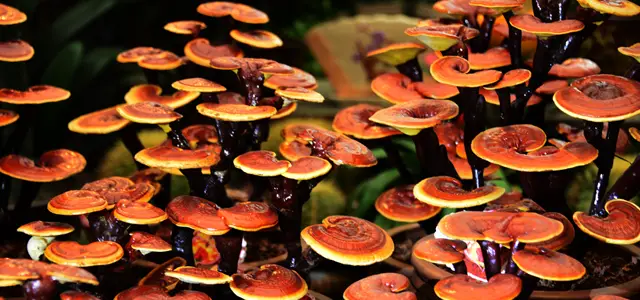The mushrooms and other fungi that can appear overnight in damp places are not plants.They belong to a completely separate group of living things that feed on dead or living plants and animals. Each fungus forms a hidden network of slender stems called a mycelium, and the visible part is just the "fruiting body" that sprouts like an apple on a tree to spread the spores that grow into new fungi.
TURKEY TAIL
Fungi are vital to life because they break down and recycle dead organisms. The turkey tail grows on dead wood,rootting grows on dead wood-rotting it down so the nutrients it contains can be used by growing plants
DEATH CAP
Some fungi are extremely poisonous if they are eaten. The weii-named death cap has probably been responsible for 90 percent of all known deaths from mushroom poisoning.

OAK BOLETE
A typical mushroom has radiating gills beneath its cap that produce millions of spores other fungi, like the oak bolete, have spongy undersides that release spores from tiny holes, or are covered with spore-producing tufts.
SAFFRON MILK CAP
Many fungi grow around the roots of certain plants, and provide them with plants foods in exchange for sugars. The saffron milk cap,for sugars.The saffron milk cap, for example, always grows with pine tress.
PARASOL MUSHROOM
Some fungi, like the penny bun and parasol mushrooms, are good to eat.But if you are not an expert at identifying them, you could be poisoned by a killer like the death cap.
FLY AGARIC
The fly agaric is one of the best known "toadstools"- a word often used for inedible or poisonous fungi. The white scales on its red cap are the remains of a thin veil that covered the growing fungi.
PENNY BUN
The root-like fibres attached to the stem are just a tiny part of the penny bun's mycellium. This can cover huge areas. The mycelium of a single honey fungus can extend 150,000sq m[1.6 million sq ft].
No comments:
Post a Comment